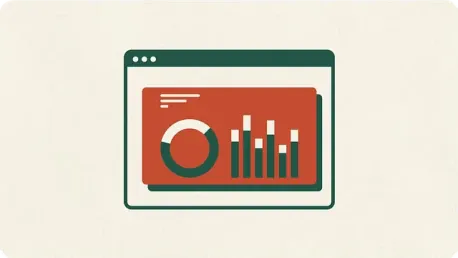As healthcare providers increasingly embrace big data, they find themselves at a crossroads: the challenge of using relevant data to improve patient care while ensuring the highest levels of privacy and compliance with regulations like the Health Insurance Portability and Accountability Act (HIPAA). Violations of HIPAA can result in reputation damage, loss of patient trust, and severe penalties—up to $50,000 per violation, alongside potential criminal charges. These legal parameters are especially challenging in data analytics, where the scale and complexity of patient data have never been higher.
Data analytics, when used effectively, can transform healthcare, delivering unprecedented levels of personalized care and operational efficiency. But healthcare organizations must find a balance, harnessing these powerful tools while protecting patient data. This means the path forward for healthcare leaders involves making privacy a core priority. Let’s explore how a robust strategy can navigate these challenges and ensure compliance and security.
1. Secure Data Storage and Encryption
The first critical step to protecting patient privacy in healthcare data analytics is ensuring secure data storage and encryption. Healthcare organizations must host patient data in HIPAA-compliant data centers, such as Microsoft Azure, which offer secure environments for data hosting. This not only safeguards data from unauthorized access but also ensures compliance with regulatory standards. Encryption is key to protecting data at rest and in transit, preventing unauthorized access even when data breaches occur.
End-to-end encryption should be implemented to maximize security. Encrypting data storage makes it nearly impossible for intercepted information to be deciphered without decryption keys. Both forms of encryption—data in transit (moving data) and data at rest (stored data)—must be employed. The encryption method should be strong enough to withstand current and future decryption attempts. Regular updates and re-evaluations of encryption protocols are crucial to keeping data proportionately secure as technology evolves.
2. Access Management and Surveillance
Securing data is not just about where it’s stored but also about who can access it. Effective access management and surveillance are crucial components. Role-based access controls (RBAC) ensure that only authorized personnel can access patient data based on their roles within the organization. This reduces the risk of data breaches by limiting data access to individuals who need it for their specific duties. Multi-factor authentication (MFA) adds another layer of security by requiring additional verification steps beyond just usernames and passwords.
Continuous monitoring of data access and usage is another fundamental practice. Healthcare organizations should implement audit log systems to track who accesses patient data and what actions they perform. These logs provide a clear trail of activity, helping detect any unusual or unauthorized behavior. Regular reviews of access rights and prompt revocation of credentials for departed employees are essential to maintaining strict data access controls. Routine surveillance and monitoring ensure that access protocols are not only established but actively maintained.
3. Routine Risk Evaluations and Inspections
Routine risk evaluations and inspections form the backbone of a proactive security strategy. Regular security audits help healthcare organizations identify and address potential risks before they escalate into serious issues. Conducting these evaluations internally and through third-party vendors involved in data analytics is critical. All partners must comply with HIPAA guidelines to ensure a cohesive and compliant data handling environment.
In recent years, the U.S. Department of Health and Human Services (HHS) Office for Civil Rights (OCR) has intensified penalties on entities failing to properly vet business associates for HIPAA compliance. Regular risk assessments and audits keep organizations prepared and proactive, significantly reducing the chances of non-compliance. These evaluations should include not just security protocols but also employee training programs and data handling procedures. By covering every aspect of data interaction, healthcare organizations can bolster their defenses against potential breaches.
4. Selecting a HIPAA-Compliant Analytics Platform
Choosing the right tools for data analytics is a crucial decision for healthcare organizations focused on maintaining patient privacy. Selecting a HIPAA-compliant analytics platform ensures that the tools used for analyzing patient data adhere to strict privacy laws. These platforms offer extensive encryption, access control measures, and user management features, safeguarding patient data throughout the analysis process.
HIPAA-compliant analytics suites enable healthcare providers to focus on extracting actionable insights rather than worrying about legal pitfalls. These platforms provide a secure environment for data analytics, allowing healthcare providers to confidently use data to improve patient care while maintaining strict privacy standards. By using compliant analytics solutions, organizations gain the competitive advantage of data-driven decision-making without sacrificing patient privacy—an essential balance in modern healthcare.
Bridging Patient Privacy and Advanced Analytics
As healthcare providers increasingly turn to big data, they face the dual challenge of leveraging relevant data to enhance patient care while maintaining stringent privacy standards and adhering to regulations like the Health Insurance Portability and Accountability Act (HIPAA). Non-compliance with HIPAA can lead to reputational harm, loss of patient trust, and hefty penalties—up to $50,000 per violation, along with possible criminal charges. This is particularly tricky in data analytics, given the unprecedented scale and complexity of patient data.
When used correctly, data analytics can revolutionize healthcare, offering unparalleled levels of personalized care and operational efficiency. However, healthcare organizations must strike a delicate balance, using these powerful tools while safeguarding patient information. Consequently, the path forward for healthcare leaders involves making privacy a central focus. By implementing robust strategies, they can navigate these challenges and ensure compliance and data security, ultimately enhancing both patient outcomes and organizational integrity.









